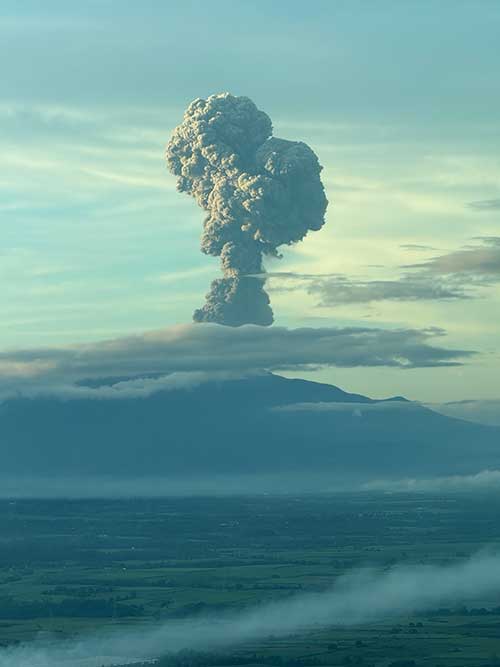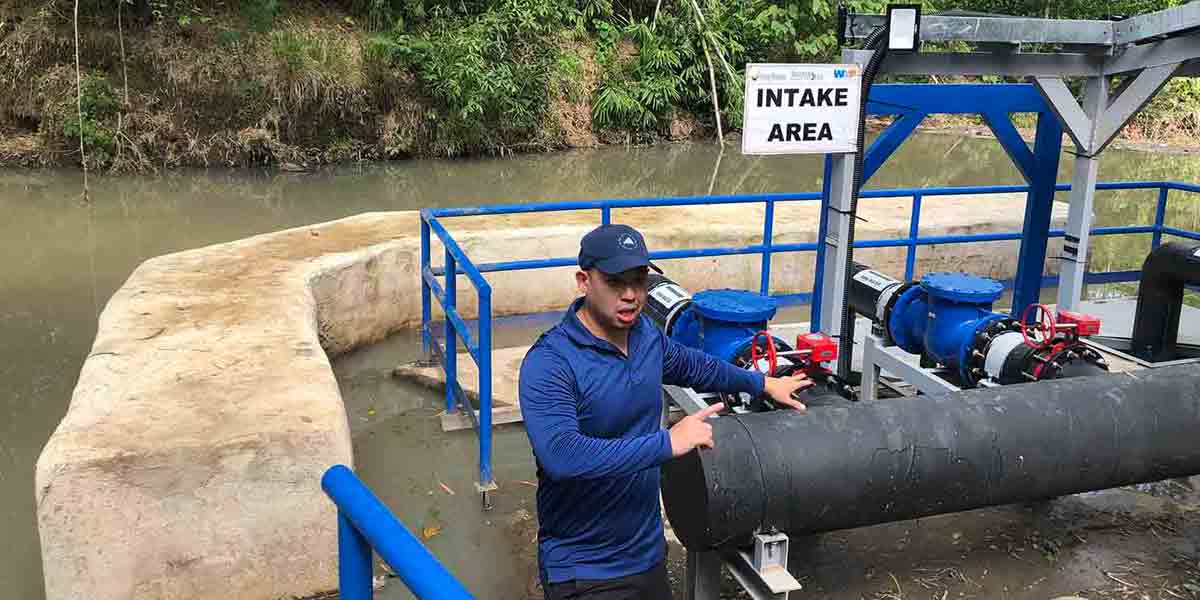
By Dolly Yasa
BACOLOD CITY — The research facility of the Sugar Regulatory Administration in La Carlota City was closed Tuesday morning following the explosive eruption of Kanlaon Volcano.
SRA Administrator Pablo Luis Azcona said the agency’s disaster response team, led by Board Member David Sanson, was activated to ensure the safety of employees.
He said the facility was closed, but the equipment remains well protected.
Azcona warned that ashfall could damage the nursery where sugarcane varieties are propagated for distribution to farmers, as the area is open.
“In the past, ashfall was acidic and damaged crops,” he said. “Last time, rain helped mitigate the impact, but now it’s very dry.”
Azcona also ordered the evacuation of the La Granja research facility in La Carlota City, Negros Occidental.
Only a skeleton crew was left to secure the premises, he said, adding that “all our vehicles are ready to deploy when requested by LGUs.”
He added, “We have regrouped our disaster response teams and are closely monitoring the situation at Mt. Kanlaon.”
SRA Board Member Dave Sanson said they have relief supplies in place and have allocated PHP4 million for additional emergency needs.
The facility is staffed by 227 personnel — 187 employees and 40 field workers. All but 20, mostly security guards, were sent home.
Azcona said that if a magmatic eruption occurs and Alert Level 4 is raised, the temporary evacuation center for SRA workers will be at its Bacolod office.
Meanwhile, in La Castellana town, the Incident Management Team suspended classes at all levels in public and private schools until further notice.
In its Tuesday bulletin, the Philippine Institute of Volcanology and Seismology said a moderately explosive eruption occurred at Kanlaon’s summit crater at 5:51 a.m. April 8 and lasted 56 minutes based on seismic and visual data.
The eruption produced a gray, voluminous plume that rose 4,000 meters above the vent before drifting west and southwest.
Rumbling sounds were heard in Barangays Biak-na-Bato and Sag-ang in La Castellana, Negros Occidental, and Barangay Pula in Canlaon City, Negros Oriental.
Pyroclastic density currents, or PDCs, flowed down the southern slopes within a kilometer of the crater in La Castellana’s jurisdiction, based on visual and thermal camera monitoring.
Large ballistic fragments were ejected around the crater, igniting vegetation near the volcano’s summit.
Thin ashfall was reported in several Negros Occidental areas: La Carlota City (Barangays Roberto Salas Benedicto, La Granja, Nagasi, Yubo, Ara-al, San Miguel and Cubay); Bago City (Barangays Mailum, Ilijan and Binubuhan); and La Castellana (Barangays Sag-ang and Mansalanao).
Sulfurous fumes were strongly experienced in Barangay Cubay, La Carlota City, and faintly in Hinigaran, Negros Occidental.
The eruption was preceded by short-term swelling of the volcano’s southeastern edifice that began Jan. 10 and a decline in average sulfur dioxide emissions from 4,014 tonnes per day as of June 3, 2024, to 2,453 tonnes per day as of March 1, 2025.
SO₂ emission on Monday averaged 1,655 tonnes per day.
No significant changes were observed in the average daily occurrence of 14 volcanic earthquakes since June 3, 2024.
These indicators suggest that gas blockage and the resulting pressure buildup inside the volcano triggered the eruption.
As of now, no significant increases in volcanic earthquakes, ground deformation or gas emissions have been observed following the eruption.
Kanlaon remains under Alert Level 3 (magmatic unrest).
This means similar short-lived explosive eruptions may occur in the short term or escalate to lava fountaining or lava flows.
Phivolcs recommends maintaining the evacuation of areas within a 6-kilometer radius due to the risk of PDCs, ballistic projectiles, rockfalls, ashfall and other hazards.
Local government units should prepare residents for further evacuation if the situation worsens.
Phivolcs also warned of possible lahars if intense rains mobilize loose ash or pyroclastic materials on the southern and western slopes.
Civil aviation authorities are advised to caution pilots to avoid flying near the summit as volcanic ash poses a threat to aircraft.
DOST-Phivolcs continues to monitor Kanlaon Volcano and will issue updates as necessary.
















